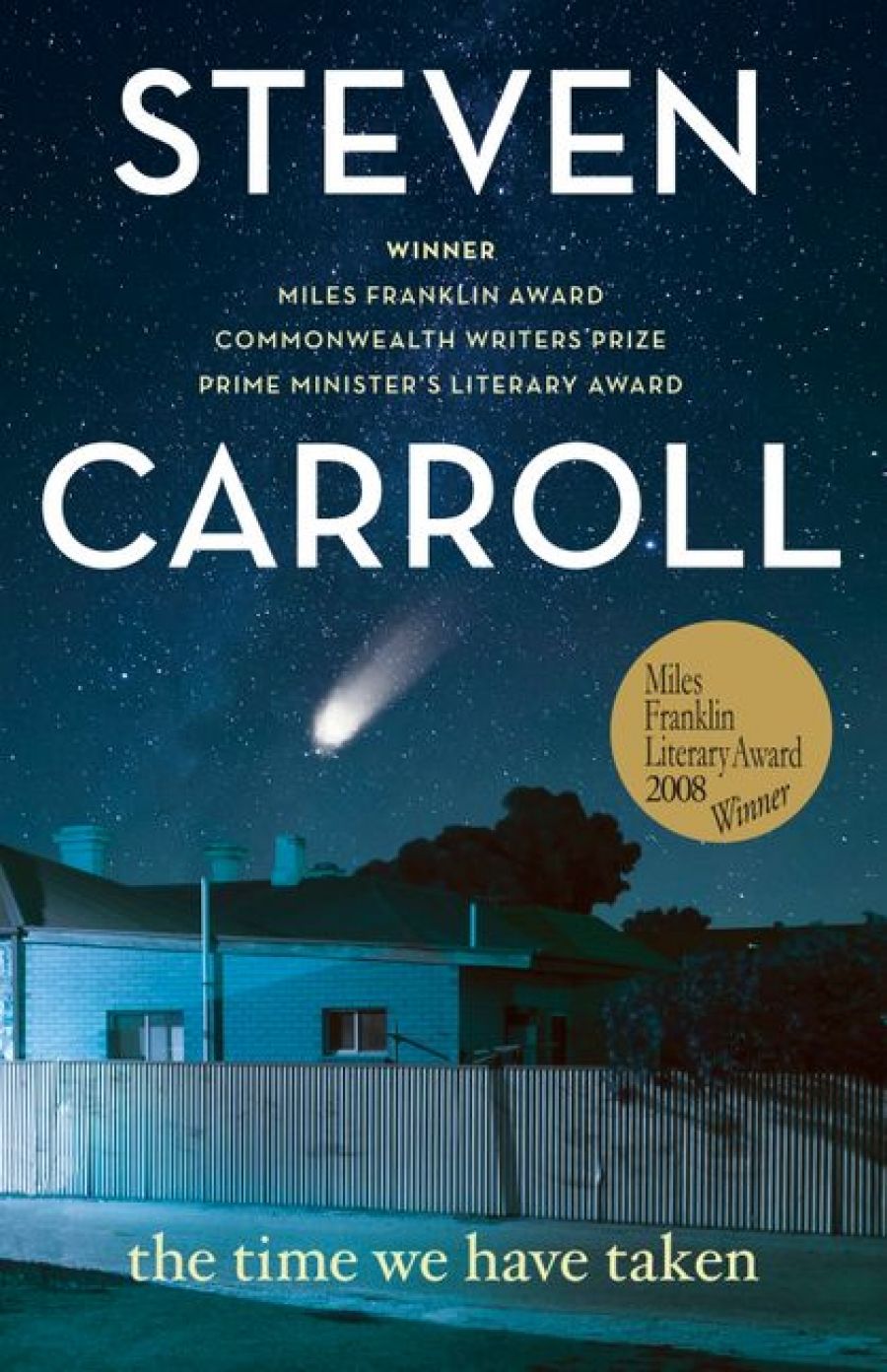
- Free Article: No
- Contents Category: Fiction
- Custom Article Title: Christina Hill reviews 'The Time We Have Taken' by Steven Carroll
- Review Article: Yes
- Online Only: No
- Custom Highlight Text:
Steven Carroll’s The Time We Have Taken is the latest in his trilogy – with The Art of the Engine Driver (2001), The Gift of Speed (2004) – about a northern suburb of Melbourne. Referred to only as ‘the suburb’, this anonymity serves to make it a universal place on the fringes of any Australian city ...
- Book 1 Title: The Time We Have Taken
- Book 1 Biblio: Fourth Estate, $27.95 pb, 400 pp, 0732278368
Michael – and Carroll, as implied author – finds it revelatory that Johnston’s novel makes art from the mundane by defamiliarising it: ‘familiar streets and houses and crappy milk bars [become] the unfamiliar stuff that is good enough for books’.
Set in 1970, The Time We Have Taken records the changing seasonal landscape of the area and the self- reflections of characters that still live there or, having left it, remain shaped by its mores. Over the year, Michael meets and watches himself falling in love with the elusive Madeleine. He reproaches himself for his sexual jealousy, uncertain whether it has any foundation in reality. His mother, the once too-glamorous (for the suburb) Rita, lives alone, wondering why she remains in the family home but unable to abandon it. Vic, Michael’s retired engine-driver father, has moved away to the sub-tropical north and is living out his days playing golf, drinking at the club and awaiting death.
The suburb is commemorating its centenary, and a mural depicting its history is commissioned from a painter friend of Michael’s. When it is unveiled, an unexpected indigenous presence in the painting subverts the Whig narrative of doughty pioneers and inexorable progress vaunted by the mayor and local business community. In 1970 Gough Whitlam, as leader of the Opposition and the coming man, is invited to open a new sports complex. The anti-Vietnam War Moratorium takes place on the day the mural is to be viewed by the local community. Political change is in the air.
While George Johnston’s suburban Melbourne in My Brother Jack (1964) of the 1920s and 1930s is tacitly acknowledged as an influence on this novel, echoes of Gerald Murnane’s work are also discernible in the subject matter and in the insistent specificities of the diction. This makes the prose seem mannered at times, but the suburb itself is represented with some of the inscrutable beauty of Howard Arkley’s paintings of suburban houses. The narrative can thus be a little opaque. I found myself looking for signposts, for some edge of satire like that of Helen Hodgman’s suburban nightmare in Blue Skies and Jack and Jill (1989).
While Carroll’s tone is not nostalgic exactly, the anger we see shimmering in Johnston and Hodgman is absent. It took me a while to realise that something else is being attempted, something rare in Australian fiction. The Time We Have Taken is breathtakingly ambitious, a Proustian narrative, allusive, reflective, elegiac and concerned very little with events as turning points in themselves. Instead, the minutiae of daily life and the unstoppable flow of time are at the novel’s centre. This becomes a moving celebration of the quotidian and of the terrible beauty of the moment that we cannot see until change has rendered it past.
When everything is settled, when everyone has gone their separate ways and finally stops long enough one day to glance back, one day when slowness is upon us and time allows the view, the question we will ask is the question that will nag us again and again and again: did we hear the music of the years? Did we see the fiddler’s hand, bowing it higher and higher through days emblazoned with wonder, or were we looking away?
The house, the yard on summer nights, the passionfruit vine where the spider indifferently spun its web, the street that started bare and filled overnight with weather board box houses and gardens that bloomed while you watched, the open farm that hovered for a few years between town and country, the dances, the songs, the tennis, the cricket, the coming and going from the station, work, school and home, throughout the years that saw a suburb born – that, that exotic tribe, was us. And the time we have taken, our moment.
This novel seeks to capture ‘the music of the years’, the music that makes us what we are. The Time We Have Taken is a significant contribution to Australian writing.


Comments powered by CComment